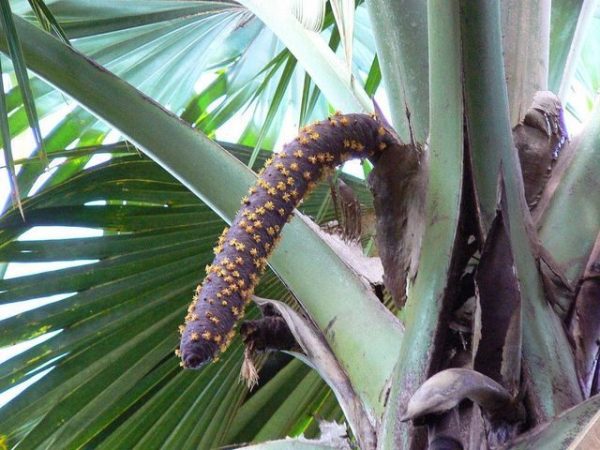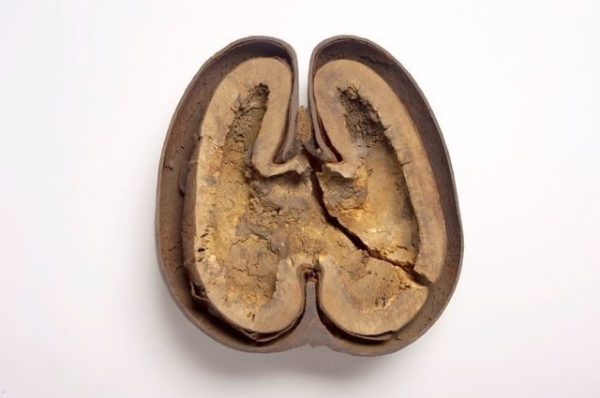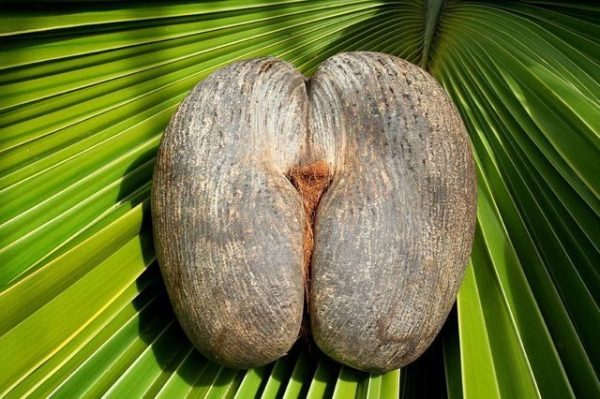
Asombroso! This is a coconut tree like no other. With a peculiar shape that leaves onlookers blushing, the Coco de Mer tree on Praslin Island in East Africa captivates travelers with its extraordinary form. A man who journeyed to the Seychelles archipelago believed he had stumbled upon the Garden of Eden when he encountered this unique palm species, known as Coco de Mer. In this article, we explore the mysteries surrounding this fascinating palm tree, its legendary associations, and the allure of its seeds that have earned it a reputation around the world.
Discovering Coco de Mer:

The islands of Praslin and Curieuse in the Seychelles are home to a palm species deemed “unique” globally—the Coco de Mer. This extraordinary palm boasts a slender trunk reaching over 30 meters in height and fan-shaped leaves nearly 5 meters long. What truly sets this plant apart are its seeds. The Coco de Mer seeds are sizable, weighty, and bear an uncanny resemblance to the posterior of a woman. In fact, one of its historical names, Lodoicea callipyge, originates from the Greek word “callipyge,” meaning “beautiful buttocks.”
Coco de Mer’s Mystique and Legends:

The Coco de Mer plant is shrouded in mystery and entwined with legends. Long before humans discovered and colonized the Seychelles, these tree nuts often washed ashore on distant coasts, such as the Maldives, earning it the alternate name “coco de Maldives.” The locals collect and trade these nuts, considering them attractive due to their unique shape and size. The seeds of Coco de Mer are perceived by many as alluring items, believed to have stimulating effects and enhance sexual activities.
The Allure of Coco de Mer Seeds:

Coco de Mer seeds, with their suggestive form, have become more than just botanical curiosities. They are sought after for their supposed aphrodisiac qualities, believed by some to promote heightened sexual experiences. The distinctiveness of these seeds has turned them into coveted items, adding an element of mystique and allure to the Coco de Mer tree. Local cultures have embraced the Coco de Mer not only for its botanical significance but also for the folklore and traditions that surround it.
Cultivation, Commerce, and Historical Significance:
In the Seychelles, Coco de Mer cultivation is not just about the allure of its seeds; it is deeply rooted in the cultural and historical fabric of the islands. Before human colonization, the palm’s nuts found their way to distant shores, contributing to its historical significance. Today, locals harvest and trade Coco de Mer seeds, perpetuating age-old traditions and maintaining the palm’s cultural importance.
Conclusion:

Asombroso indeed! The Coco de Mer tree of Praslin Island stands as a botanical marvel, captivating not only for its unique form but also for the legends and allure that surround it. From its association with the Garden of Eden to its seeds believed to enhance passion, Coco de Mer is a symbol of nature’s wonders and the mystique that enchants those who encounter it. In the heart of the Seychelles, this palm tree continues to weave tales of beauty, desire, and the enigmatic allure of the Coco de Mer.





